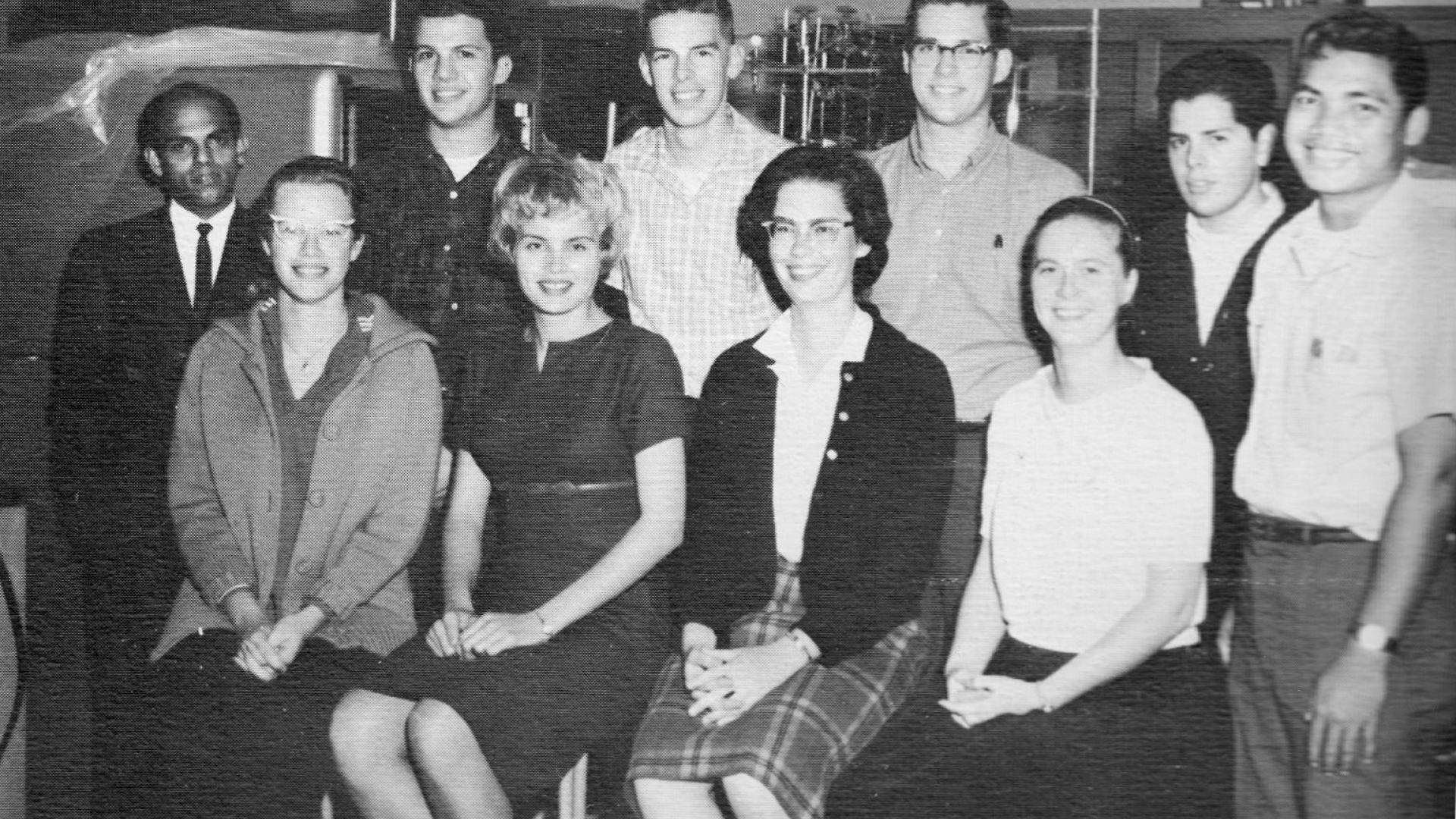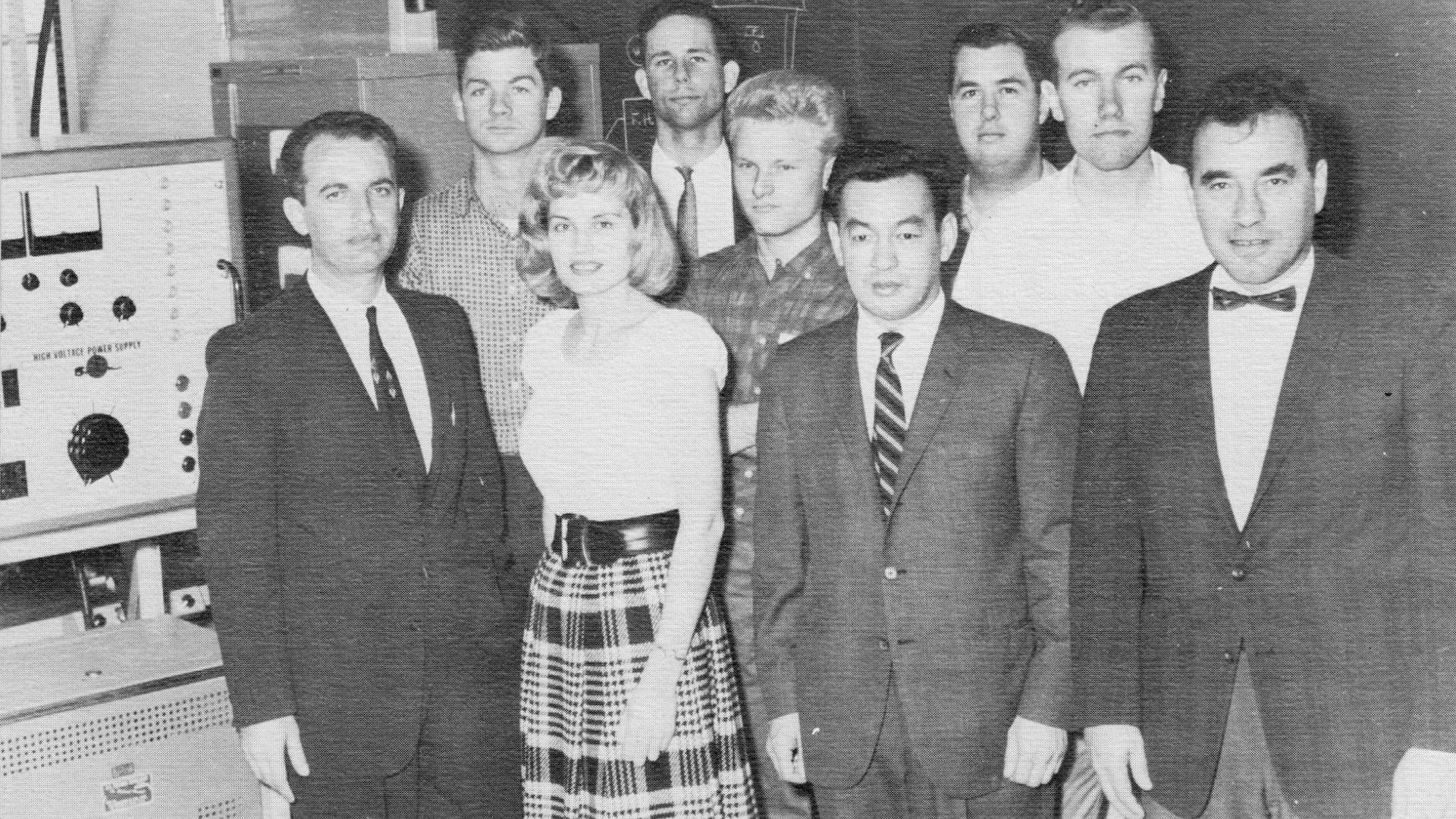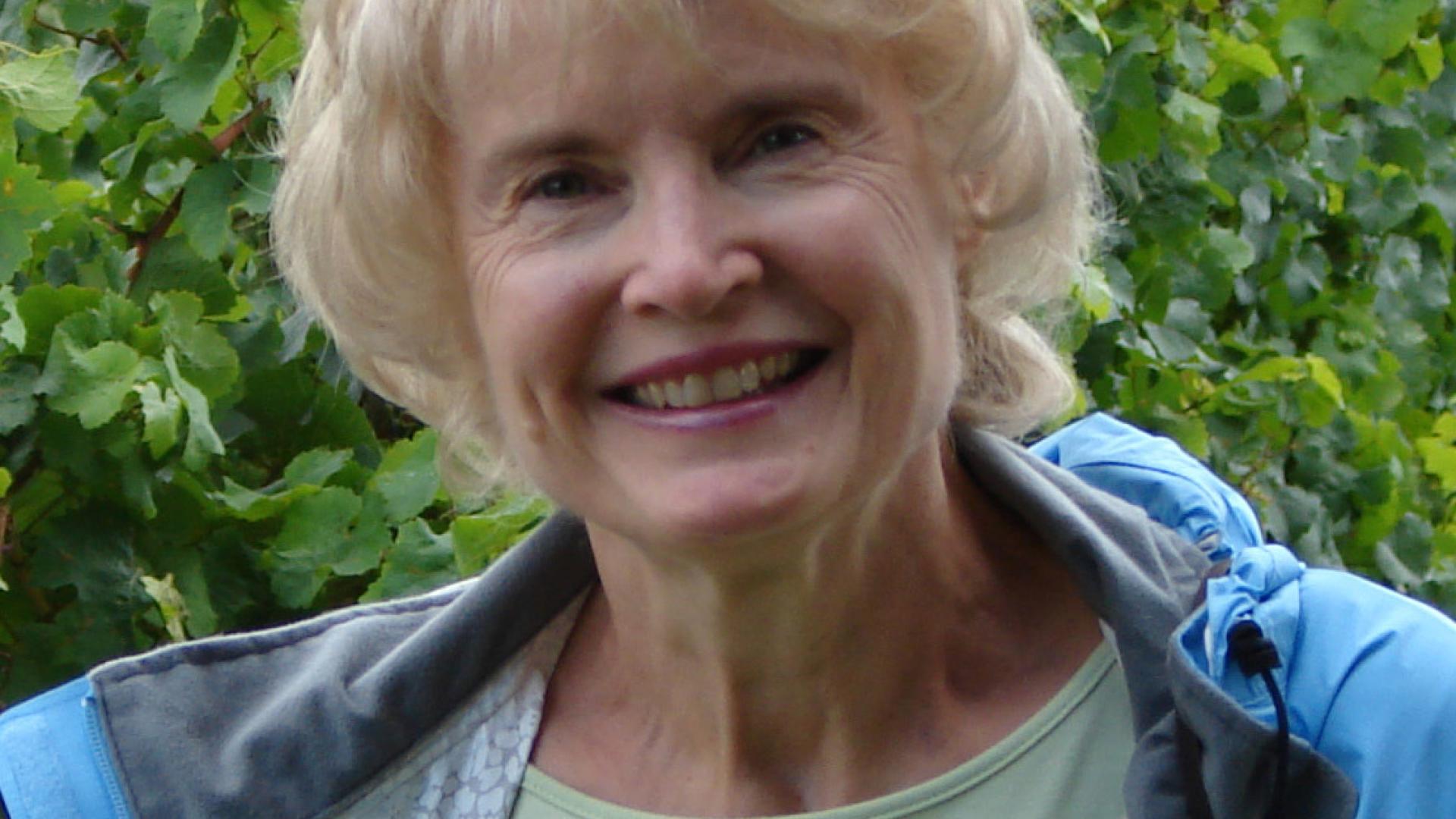Gerrie Peters
I recall working endless problem sets and writing endless lab reports. I was a physics major.
I was a member of NABLA Society, the branch of the American Institute of Physics on the LBSC campus. I served as president of the society during my junior and senior years. Our activities included weekly talks at lunch time and occasional field trips. I recall trying to schedule as many student lectures as possible.
The small lab rooms between the major physics laboratory class rooms on the first floor of the then SC-2 building (now PH-2). I found them to be a good place to consume my bag lunch and make progress on homework problems at the same time. If I was not pressed for time I would join others who also discovered that the class room labs were a good place to have lunch. I met my husband in one of those labs.
Professor Charles Roberts, Chair of the Physics Department. Having read the book “Frontiers of Astronomy” by Fred Hoyle, I became extremely interested in stellar evolution, especially the structural changes that take place in the cores of massive stars, and was considering transferring to UCLA where they had an Astronomy Department. When I mentioned this to Dr. Roberts, he recommended that I stay at LBSC and obtain a B.S. in Physics, then pursue a Ph.D. in Astronomy at UCLA. He correctly said that if I wanted to solve astrophysical problems, I needed a firm background in physics. I took his advice, and it was perhaps the best guidance I ever received from a faculty member.
I was accepted into a relatively new Ph.D. program in Astronomy at UCLA. My background in physics did give me a slight advantage over many of my fellow graduate students. The curriculum was quite demanding. I was required to make up the undergraduate astronomy class that I had missed at the same time taking the normal graduate classes. My first formal astronomy class was a graduate class in Stellar Atmospheres taught by a noted astronomer with impressive academic lineage, who eventually became my Ph.D. advisor. The study habits I acquired at LBSC allowed me to survive the academics of the UCLA program.
I received a Ph.D. in Astronomy at UCLA. My Ph.D. dissertation was on the chemical composition of hot (massive) stars. Not stellar evolution per se, but rather an observational check on theory that predicts the relative abundances of elements heavier than Helium. After a short stint of post-doctoral work at UCLA (studying some unusual activity that I had discovered in a hot star) I spent two years doing X-ray astronomy at the Harvard-Smithsonian Center for Astrophysics. I then went on to USC, where I have held several positions since the late 1970s.
I am a research professor of physics & astronomy at USC. I have received about 65 research grants from NASA since the 1970s for investigating various topics relating to hot, massive stars. I have taught many astronomy classes at USC. This semester I am teaching my senior-level class in Stellar Astrophysics that I developed.
I feel that CSULB is still an excellent place to receive an undergraduate education in science and math. Compared with the large state and private universities, the class sizes are relatively small and students can receive important personal attention from the faculty, including the department chair! When I was at LBSC there were only three women majoring in physics. I later learned from one of the faculty members (though I never checked it) that eight years elapsed between us and the next female physics majors. It was of course a challenge being such a minority but we survived.
I liked songs by Jan & Dean, not that I spent any significant time at the beach let alone surfing, but I liked their sound. I admired Elvis, who of course was in a class of his own. I watched very little TV. Fashion-wise I liked the full-skirt dresses, and I still prefer the popular expression of “neat” instead of “cool”.








